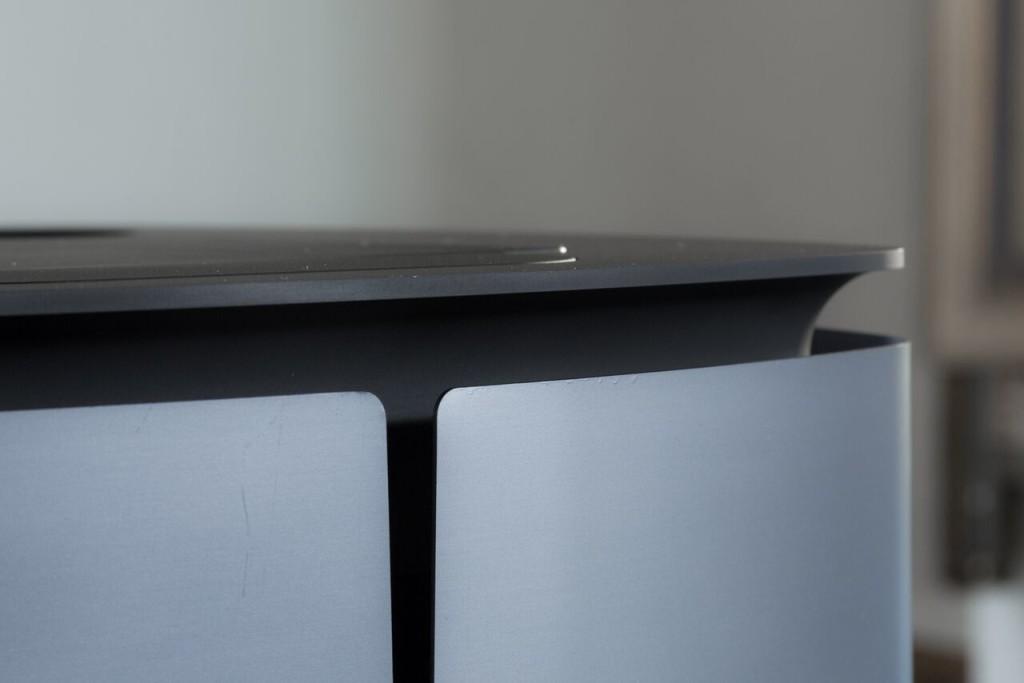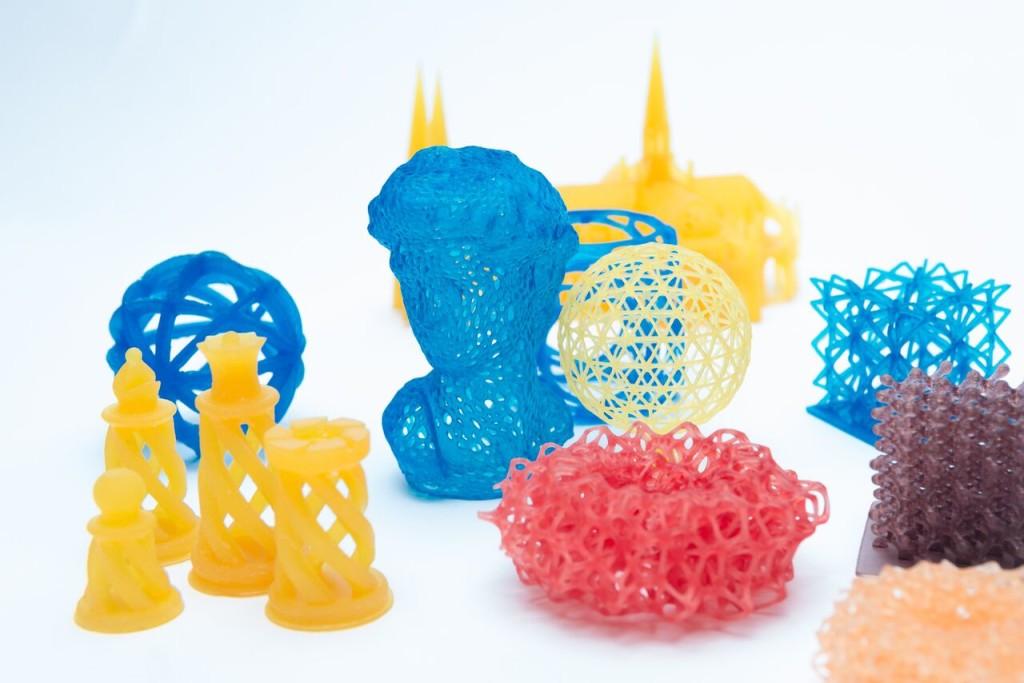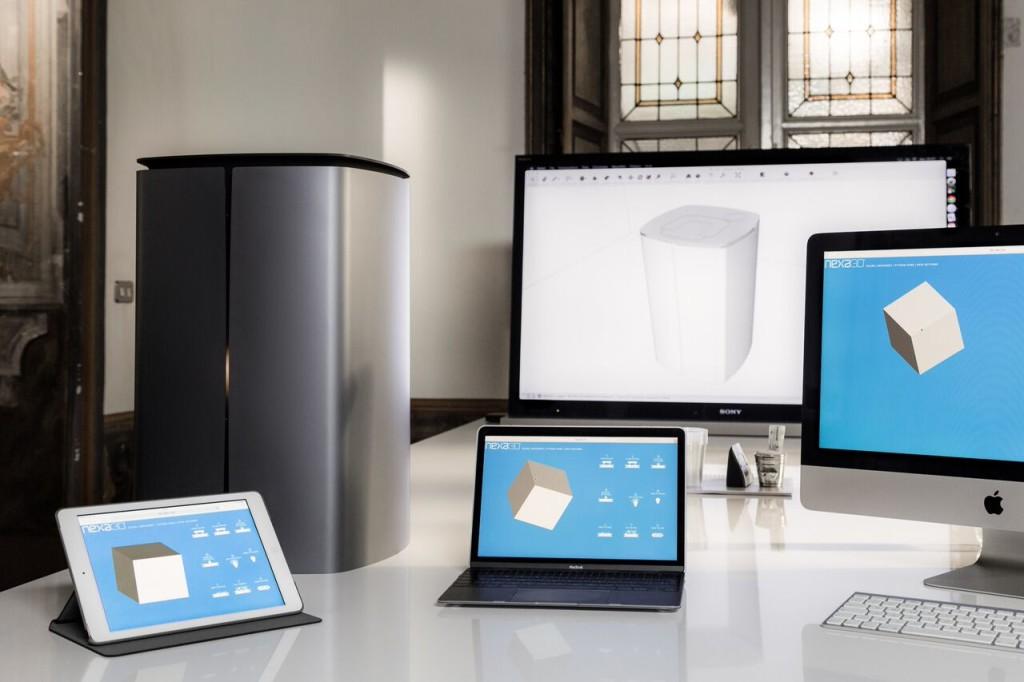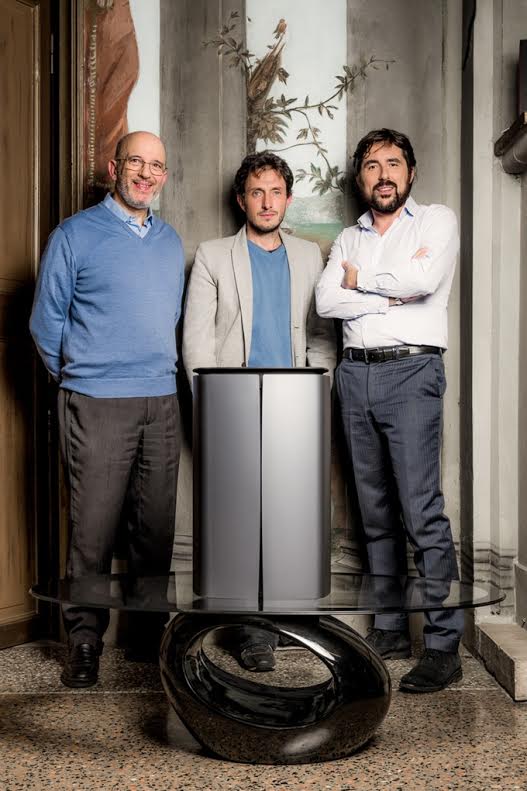The Ferrari of 3D Printers: Exclusive Interview with Andrea Denaro, Co-Founder of NEXA3D, Behind the “Fast and Beautiful” NX1 3D Printer
 A few weeks ago, we were introduced to the NX1, an incredible-looking 3D printer now running a fast-growing Kickstarter campaign, with, as of the time of writing, more than $100,000 pledged in support–well on the way to the ~$170K (€160K) goal, with three more weeks to go. The printer, from NEXA3D, holds a lot of promises to those interested in speed–and aesthetics. Designed by a team of Italians with a keen eye for tech and eye appeal, the NX1 is a sleek machine with all the allure of a Ferrari: it’s fast, high-performing, and certainly looks the part.
A few weeks ago, we were introduced to the NX1, an incredible-looking 3D printer now running a fast-growing Kickstarter campaign, with, as of the time of writing, more than $100,000 pledged in support–well on the way to the ~$170K (€160K) goal, with three more weeks to go. The printer, from NEXA3D, holds a lot of promises to those interested in speed–and aesthetics. Designed by a team of Italians with a keen eye for tech and eye appeal, the NX1 is a sleek machine with all the allure of a Ferrari: it’s fast, high-performing, and certainly looks the part.
Of course, big promises in the 3D printing industry often lead to skepticism from those who have seen high-flying claims crash and burn–so who’s to say the NX1 is more than a pie-in-the-sky dream machine? Andrea Denaro, co-founder of NEXA3D, comes to the rescue here, as I recently had the opportunity to ask him about his company’s claim to greatness. In a very thorough interview, Andrea answered some of my initial questions–at a greatly appreciated length!–regarding the NX1.
From the start of the development process through a look at the speeds possible, the NX1 truly does appear to be a well-tested machine that is proving its claims. Once the Kickstarter campaign ends–it runs through December 22nd, with an expected shipment date to backers of March 2016–we’ll certainly be looking forward to finding out more directly from users of this blistering-fast 3D printer.
Below is my interview with Andrea, in full.
When did development begin for the NX1? The Kickstarter notes two years; when did the R&D process start, and who initiated it?
Development on the NX1 started two years ago when Lucinano and I, read an article on FDM 3D printing and decided to start designing a new technology for 3D printing.
On May 12, 2014 we started a search for a better technologies than FDM (it still has too many technical constraints). We came across a Wikipedia explanation of DLP, a very old printing method, then we searched YouTube videos to see DLP in action. It was fascinating because it was able print complex and non-solid objects, but the machines were extremely big and the process was incredibly slow.
So we got set out on our first challenge: to develop a small, fast desktop 3D printer.
What was the inspiration for the tech behind this process?
From the first moment we started working on the NX1, our goal was to bring a 3D printer to every home. We asked to ourselves: Why don’t I have a 3D printer on my desktop? What was blocking the 3D market from exploding?
In our opinion most 3D printers are ugly, difficult to use, and far too expensive. We witnessed the amazing launch of Form1. It was fantastic to watch, but not as fantastic as we expected. And the product was still targeted mostly to makers. Our focus is on everyday users.
We realized that the NX1 had to be highly accurate, fast and smart; And be so nicely designed that consumers would every feel comfortable having it in their home as an everyday object.
We filed our first patent in October of 2014. At that time the name of the product was Resyna 1.0. The Resyna 1.0 was nice, but not great. It was accurate and smart and fast (around 2x faster than other SLA or DLP printers) but we didn’t feel it would work in the everyday home environment.
Technically the Resyna 1.0 was a breakthrough for us as it introduced the concept of adding a film within the tank to avoid mechanical issues between printing object and the tank itself.
The Resyna was wonderful, seriously I loved it! Resyna was our Apple 1! But it wasn’t enough. Speed was still an issue. People kept saying: “if I have to wait 3 hours, then I prefer to buy the product online.” So it was the Resyna remained something of a niche product, but was not a 3D printer for the masses. Andrea was always repeating to us the sofa experience to define a printer for everybody: let’s image you’re sitting on your sofa watching a cartoon with your 5 year-old daughter and she loves a character in the cartoon. Ok, now image you open your iPhone a few taps and 5 minutes later the action figure of the character is in your daughter’s hands! That’s the sofa experience we are targeting. We had everything, but we were missing speed.
We entered into an R&D agreement with a Italian chemical company and that was key to speeding up our process. With this chemical partner, we were able to accelerate development of a fast-acting photopolymer. Around this same time we started looking at silicon films, had an epiphany for applying them to 3D printing and our LSPc technology was born.
 Was the cartridge system the original design for materials usage, or did it evolve through the R&D process?
Was the cartridge system the original design for materials usage, or did it evolve through the R&D process?
From the beginning, our goal was to make printers for everybody. We think it’s silly to expect everyday consumers to put on gloves, and start doing basic chemistry with bottles and tool just to print objects. The customer experience had to be as simple and easy as it is to use 2D home printers. That’s why we designed a cartridge system with a particular pump, special tank design and many other tools that enable automatic loading and unloading – this is clear even in the first patents we filed. By the way, the cartridge concept alone is a revolution in 3D printing nobody is doing it.
Will any of the eventual products (e.g., resin cartridges) become open source, or available through third party distributors, or will all remain proprietary?
We strongly believe in transparency and communities, but that said, the resin is a core part of our technology. Using a non-Nexa3D resin in an NX1 unit would most likely diminish performance and would probably damage the printer. At the moment we don’t plan to make it open.
The good news is that we aim to make it even more accessible. Already we are about a 30% less expensive than other resins, thanks to our chemical partner. Once the business grows we will be able to scale production and make it even less expensive for our customers.
What are the material capabilities of the resin?
In the near future we will release a broad collection of resins that can make harder and softer objects. We also intend to offer several colors. We are very satisfied with our chemical partner, which assures us they can boost production as our sales increase; the sooner we reach our goals, the sooner will able to release these new resins.
When is the expected commercial (non-Kickstarter) launch?
Our target is to be ready to accept orders while shipping the last units sold through Kickstarter sometime in March 2016. (On Kickstarter, we recently released an update with many new details about production, our partner and how we are setting this up.)
 What can you tell us about the high-speed capabilities?
What can you tell us about the high-speed capabilities?
From the beginning Andrea’s biggest concern was speed, he always said that it was too boring to wait hours for an object. That has been a great push for the development team as well as making it smarter and easier to use than any other 3D printer.
We print slightly faster than 1cm per 1 minute. Speaking in inches it is about 150 seconds per inch.
Unlike conventional bottom-up 3D printing systems (DLP, SLA), LSPc interposes a transparent self-lubricating film between the bottom of the tank, the photo-curing resin and the light source. By gradually releasing a layer of oil, this enables the finished resin to solidify while suspended on the substrate.
The heart of the NX1 system is the oil, because it creates an inhibitor sublayer that prevents newly formed layers from sticking to the build platform. Using a partially continuous, sequential process for perfect three-dimensional object formation, the solution completely eliminates the need for the extraction tilting systems used in conventional technologies and gives rise to a continuous printing process.
To reach these incredible performance levels, we invented a new algorithm and based our software on it. For the first time ever, the printing and solidifying processes are optimized according to the specific characteristics of the object to be produced.
As the equation of time shows the speed is given but the shape of each layer and the thickness of the object sides: the thinner it is, the faster it goes. Is very important that when we say fast or slow, slow means 150 seconds for centimetres and that is still definitely impressive compared to any other 3D printer.
What are the limitations of the NX1?
The NX1 can print objects 4.72×3.54×7.87in.
How many full-scale printers have been made and tested so far?
We already built a number of commercially ready printers and three scientific prototypes. Each one has run thousands of testing hours.
What design system/software has proven best with NX1?
We developed our own software, which is best for the NX1. We are currently working through on expanding our platform to work with popular 3D printing applications.
 What difficulties remain in the development process?
What difficulties remain in the development process?
Development is no longer an issue for us. Our biggest challenge right now is raising the capital required to produce the NX1. If our Kickstarter campaign is successful, which it looks like it will be, then we will be a lot closer to mass production.
What are the full speed specs and expectations?
The NX1 has been timed printing 3D objects at 42 seconds per centimeter. As far as speed goes, the difference between 2 hours and 10 minutes is a huge; but once you’ve got a fast 3D printer like the NX1 then what difference does a few seconds make when you cut wait times from hours to seconds? Our expectation is that we will continue to improve our print time performance; but we believe that our current speeds are already enough to enable everyday usage. We also expect consumers’ mindset to change about 3D printing being useful to improving everyday lives.
How did the unique design come to be?
We’re Italian engineers and designers, so we looked at other well-known fast Italian products, specifically Ferrari. We asked the question if Ferraris are fast and beautiful, then why couldn’t a 3D printer also be fast and beautiful? There’s not another 3D printer on the market that consumers would want in their living rooms. This is the NX1’s Italian DNA: we love design, art and beauty.
Through the Kickstarter campaign, backers are able to support the NEXA3D team, and can receive their own NX1 3D Printers starting at $1,495 (€1,399), assuming the campaign is fully funded. And at this point, I’d certainly be shocked if they do not reach their goal.
While one point of potential contention remains regarding a patent dispute–which will be discussed separately–the NEXA3D team has responded with a statement that all technology they are using is correctly patented and is fully their own. [Updated to add: writer Scott Grunewald has taken an in-depth look at the dispute between these patent-pending technologies.]
With speeds 40 times as fast as their competitors’, the team behind the NX1 3D printer have certainly caught our eye. Discuss this interview in the NX1 3D Printer forum on 3DPB.com.
Subscribe to Our Email Newsletter
Stay up-to-date on all the latest news from the 3D printing industry and receive information and offers from third party vendors.
You May Also Like
Profiling a Construction 3D Printing Pioneer: US Army Corps of Engineers’ Megan Kreiger
The world of construction 3D printing is still so new that the true experts can probably be counted on two hands. Among them is Megan Kreiger, Portfolio Manager of Additive...
US Army Corps of Engineers Taps Lincoln Electric & Eaton for Largest 3D Printed US Civil Works Part
The Soo Locks sit on the US-Canadian border, enabling maritime travel between Lake Superior and Lake Huron, from which ships can reach the rest of the Great Lakes. Crafts carrying...
Construction 3D Printing CEO Reflects on Being Female in Construction
Natalie Wadley, CEO of ChangeMaker3D, could hear the words of her daughter sitting next to her resounding in her head. “Mum, MUM, you’ve won!” Wadley had just won the prestigious...
1Print to Commercialize 3D Printed Coastal Resilience Solutions
1Print, a company that specializes in deploying additive construction (AC) for infrastructure projects, has entered an agreement with the University of Miami (UM) to accelerate commercialization of the SEAHIVE shoreline...






























